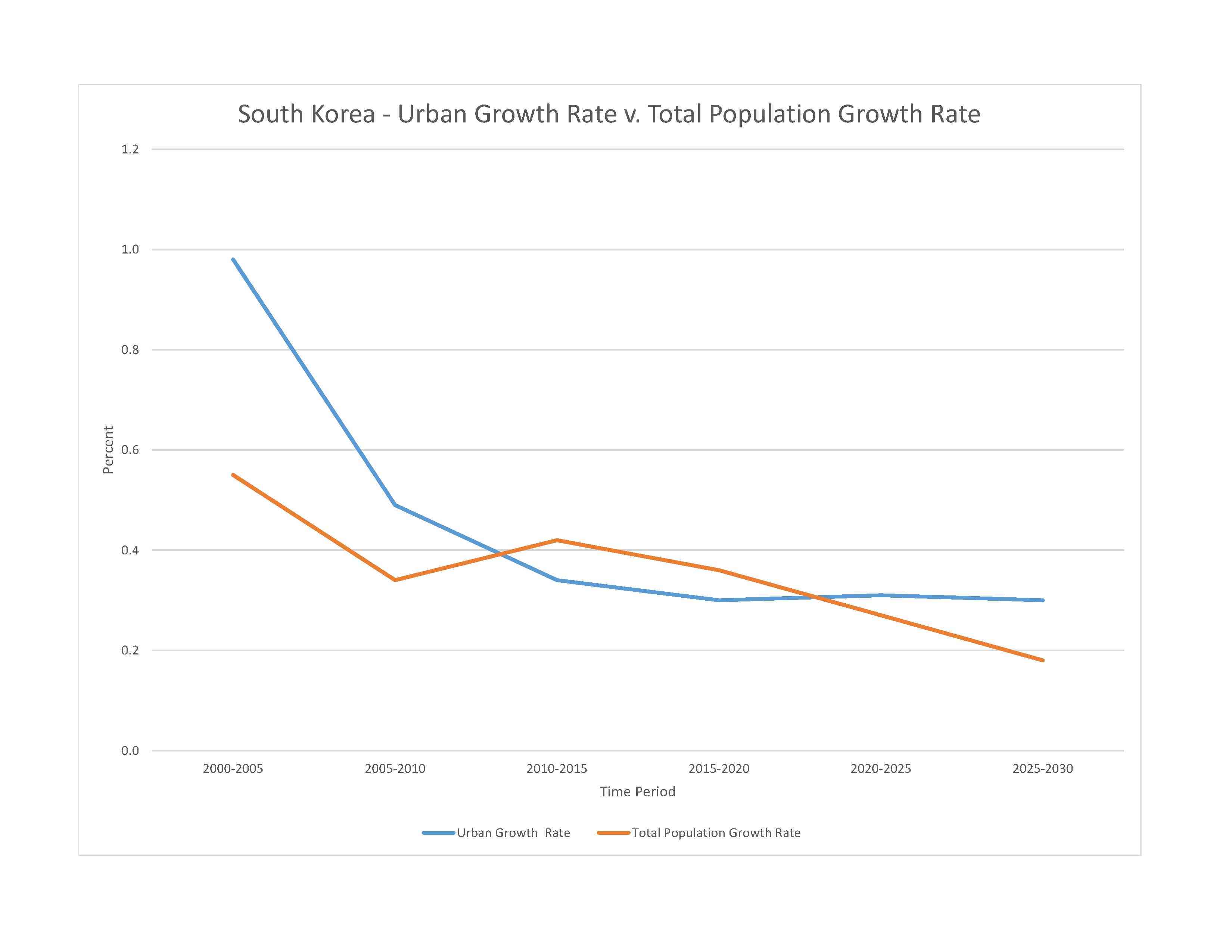
51,966,948 (2023 est.)
noun: Korean(s)
adjective: Korean
homogeneous
Korean, English (widely taught in elementary, junior high, and high school)
major-language sample(s):
월드 팩트북, 필수적인 기본 정보 제공처 (Korean)
The World Factbook, the indispensable source for basic information.
Korean audio sample:
Protestant 19.7%, Buddhist 15.5%, Catholic 7.9%, none 56.9% (2015 est.)
note: many people also carry on at least some Confucian traditions and practices
0-14 years: 11.53% (male 3,072,352/female 2,916,984)
15-64 years: 70.1% (male 18,788,714/female 17,639,714)
65 years and over: 18.38% (2023 est.) (male 4,196,789/female 5,352,395)
total dependency ratio: 39.9
youth dependency ratio: 16.6
elderly dependency ratio: 23.3
potential support ratio: 4.3 (2021 est.)
total: 45 years (2023 est.)
male: 43.5 years
female: 46.8 years
0.23% (2023 est.)
7 births/1,000 population (2023 est.)
7.3 deaths/1,000 population (2023 est.)
2.6 migrant(s)/1,000 population (2023 est.)
with approximately 70% of the country considered mountainous, the country's population is primarily concentrated in the lowland areas, where density is quite high; Gyeonggi Province in the northwest, which surrounds the capital of Seoul and contains the port of Incheon, is the most densely populated province; Gangwon in the northeast is the least populated
urban population: 81.5% of total population (2023)
rate of urbanization: 0.31% annual rate of change (2020-25 est.)

9.988 million SEOUL (capital), 3.472 million Busan, 2.849 million Incheon, 2.181 million Daegu (Taegu), 1.577 million Daejon (Taejon), 1.529 million Gwangju (Kwangju) (2023)
at birth: 1.05 male(s)/female
0-14 years: 1.05 male(s)/female
15-64 years: 1.07 male(s)/female
65 years and over: 0.78 male(s)/female
total population: 1.01 male(s)/female (2023 est.)
32.2 years (2019 est.)
8 deaths/100,000 live births (2020 est.)
total: 2.8 deaths/1,000 live births (2023 est.)
male: 3 deaths/1,000 live births
female: 2.6 deaths/1,000 live births
total population: 83.2 years (2023 est.)
male: 80.1 years
female: 86.4 years
1.11 children born/woman (2023 est.)
note: some sources estimate the TFR to be as low as 0.78
0.54 (2023 est.)
82.3% (2018)
note: percent of women aged 20-49
improved: urban: N/A
rural: N/A
total: 99.9% of population
unimproved: urban: N/A
rural: N/A
total: 0.1% of population (2020 est.)
8.4% of GDP (2020)
2.48 physicians/1,000 population (2019)
12.4 beds/1,000 population (2018)
improved: urban: N/A
rural: N/A
total: 99.9% of population
unimproved: urban: N/A
rural: N/A
total: 0.1% of population (2020 est.)
4.7% (2016)
total: 7.74 liters of pure alcohol (2019 est.)
beer: 1.72 liters of pure alcohol (2019 est.)
wine: 0.15 liters of pure alcohol (2019 est.)
spirits: 0.22 liters of pure alcohol (2019 est.)
other alcohols: 5.66 liters of pure alcohol (2019 est.)
total: 20.8% (2020 est.)
male: 35.7% (2020 est.)
female: 5.9% (2020 est.)
0.9% (2019/21) NA
52.9% (2023 est.)
4.7% of GDP (2019 est.)
total population: NA
male: NA
female: NA
total: 17 years
male: 17 years
female: 16 years (2020)
NOTE: The information regarding Korea South on this page is re-published from the 2024 World Fact Book of the United States Central Intelligence Agency and other sources. No claims are made regarding the accuracy of Korea South 2024 information contained here. All suggestions for corrections of any errors about Korea South 2024 should be addressed to the CIA or the source cited on each page.
This page was last modified 04 May 24, Copyright © 2024 ITA all rights reserved.